Crafting a Cohesive Garden: Integrating Bleeding Hearts with Companion Plants
This post follows our research editorial guidelines.


Imagine a botanical ballet in your garden, with the star of the show being the enchanting Bleeding Heart (Dicentra spectabilis). This pink perennial charmer, with its heart-shaped blooms and elegantly drooping stems, brings a touch of whimsy and romance to any green space. Let’s dive into the essentials of cultivating Bleeding Hearts, from creating the perfect environment to choosing the ideal companions that highlight their unique beauty.

Quickly Find Garden Companion tips:
Creating the Ideal Haven for Bleeding Hearts
Bleeding Hearts flourish in the cool embrace of shade and the comfort of moist, well-drained soil. Tuck them under the canopy of trees or on the north side of buildings to create a thriving retreat where other flowers might shy away. Their spectacular display of pink and white hearts peaks in spring, fading away with the summer’s warmth, so plan their placement with their seasonal retreat in mind.
Showcasing Their Distinctive Elegance
The cascading stems and pendulous, heart-shaped flowers of the Bleeding Heart are perfect for adding layers of vertical interest and a soft, textural contrast to your garden tableau. Plant them in raised beds or on gentle slopes to bring their intricate details into eye-level view. Their naturalistic form makes them an ideal choice for woodland or cottage gardens, where their fanciful silhouette can playfully contrast with more structured greenery.
Choosing the Perfect Garden Companions
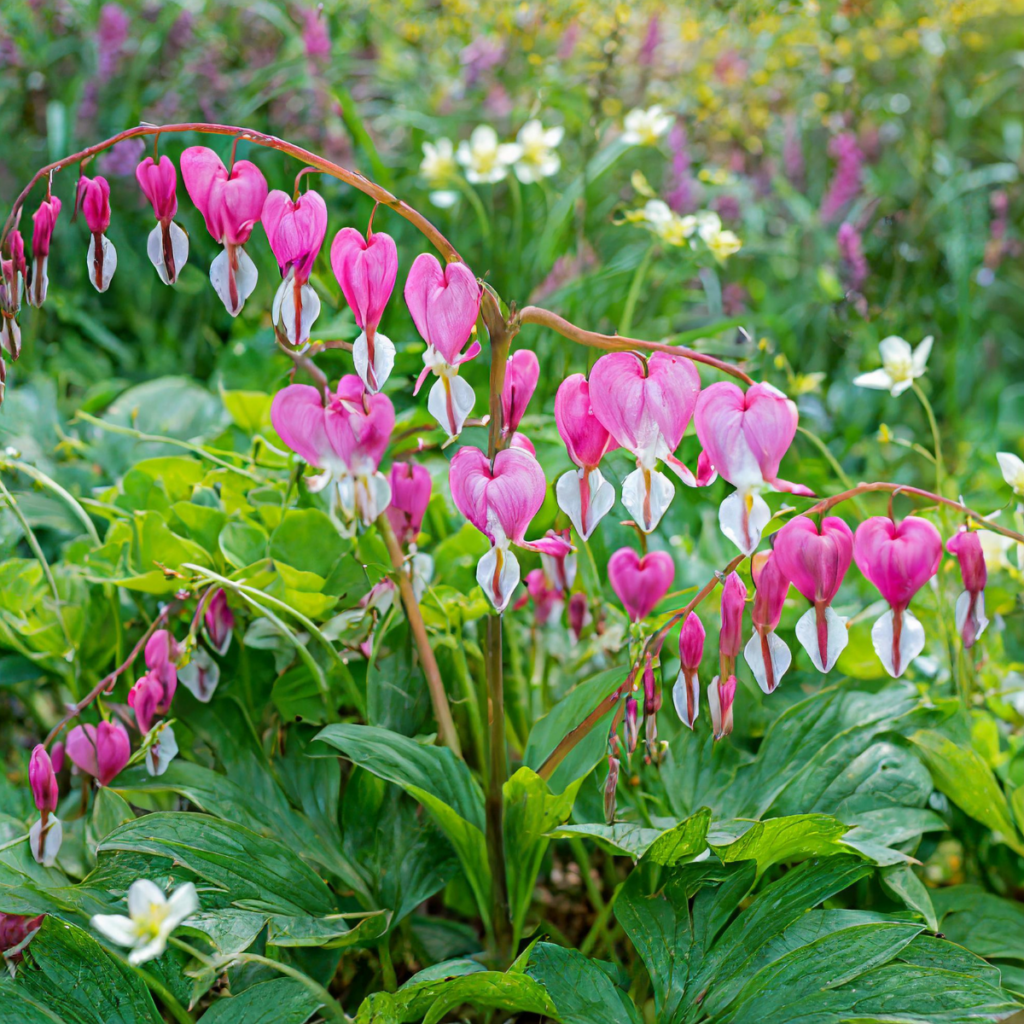
- Hostas: These robust perennials pair wonderfully with Bleeding Hearts. Their expansive foliage splendidly fills the gaps when Bleeding Hearts retreat in summer, thriving in similar shady nooks.
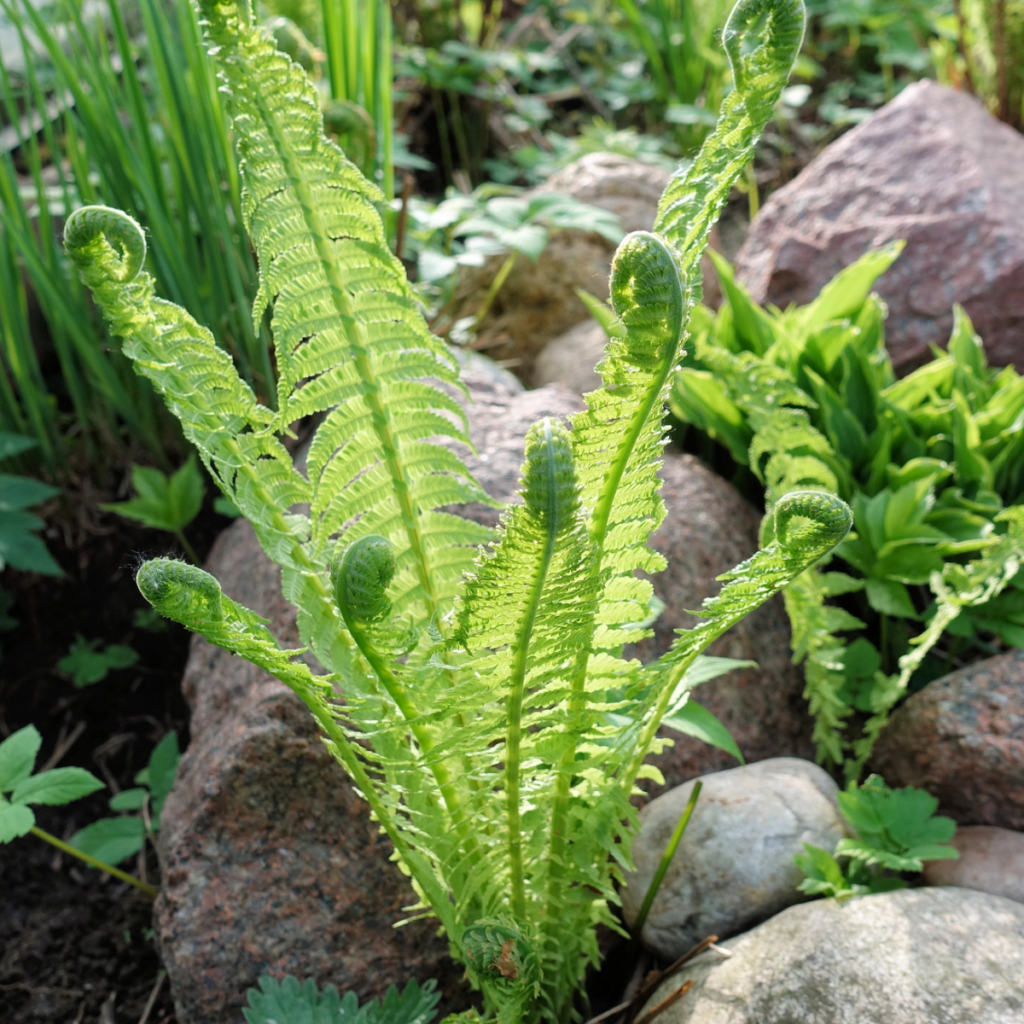
- Ferns: Embrace the shade-loving nature of ferns to complement the delicate droop of Bleeding Heart blooms. Varieties like Maidenhair or Lady Fern add a vertical dimension that enriches the garden’s depth.

- Astilbes: With their feathery plumes in colors ranging from snowy whites to rich purples, Astilbes not only complement the pale pinks of Bleeding Hearts but also share their love for moist, shaded spots.
Expanding the Palette with Companions
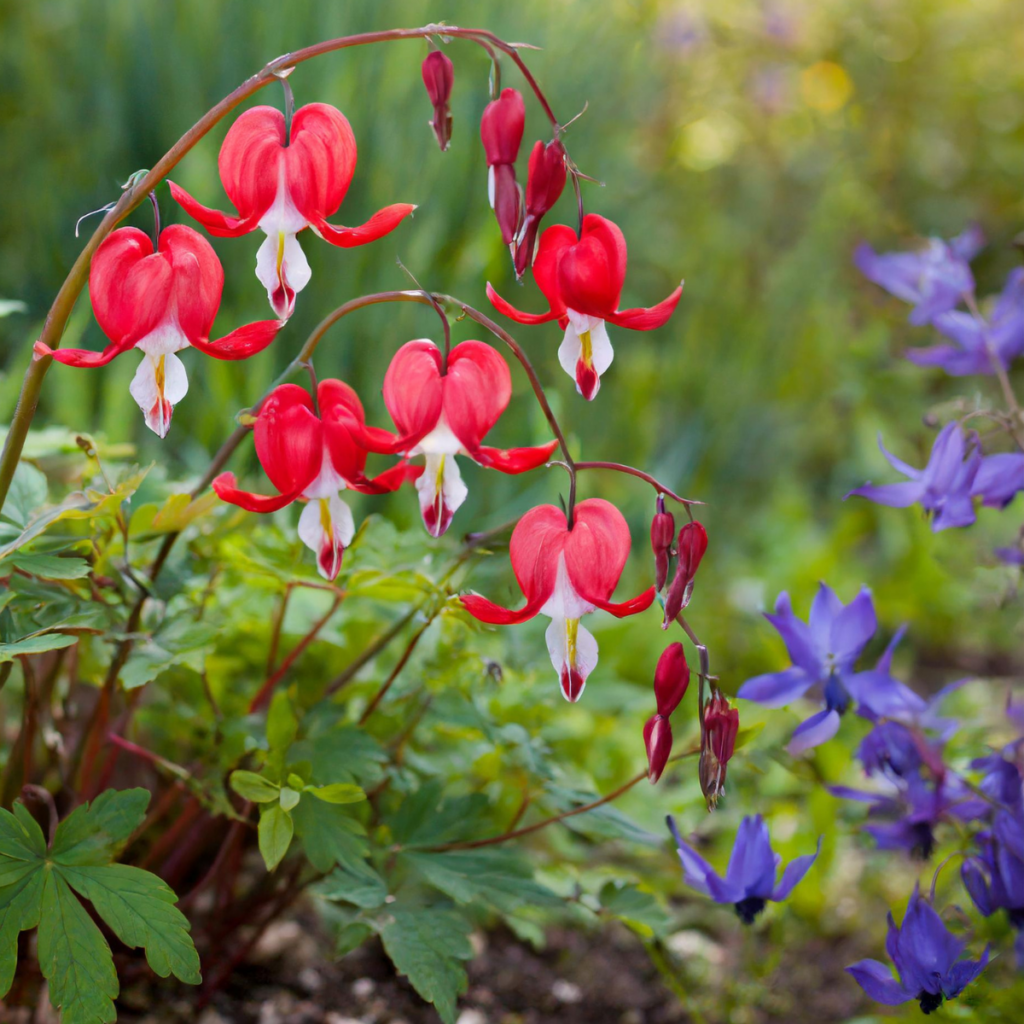
- Columbines (Aquilegia): With their graceful, nodding flowers, columbines echo the delicate shape of Bleeding Heart blooms. They are available in a variety of colors, adding depth and a subtle dance of form alongside the heart-shaped flowers. Both perennials enjoy similar light conditions and bring a delightful, old-world charm to any garden setting.
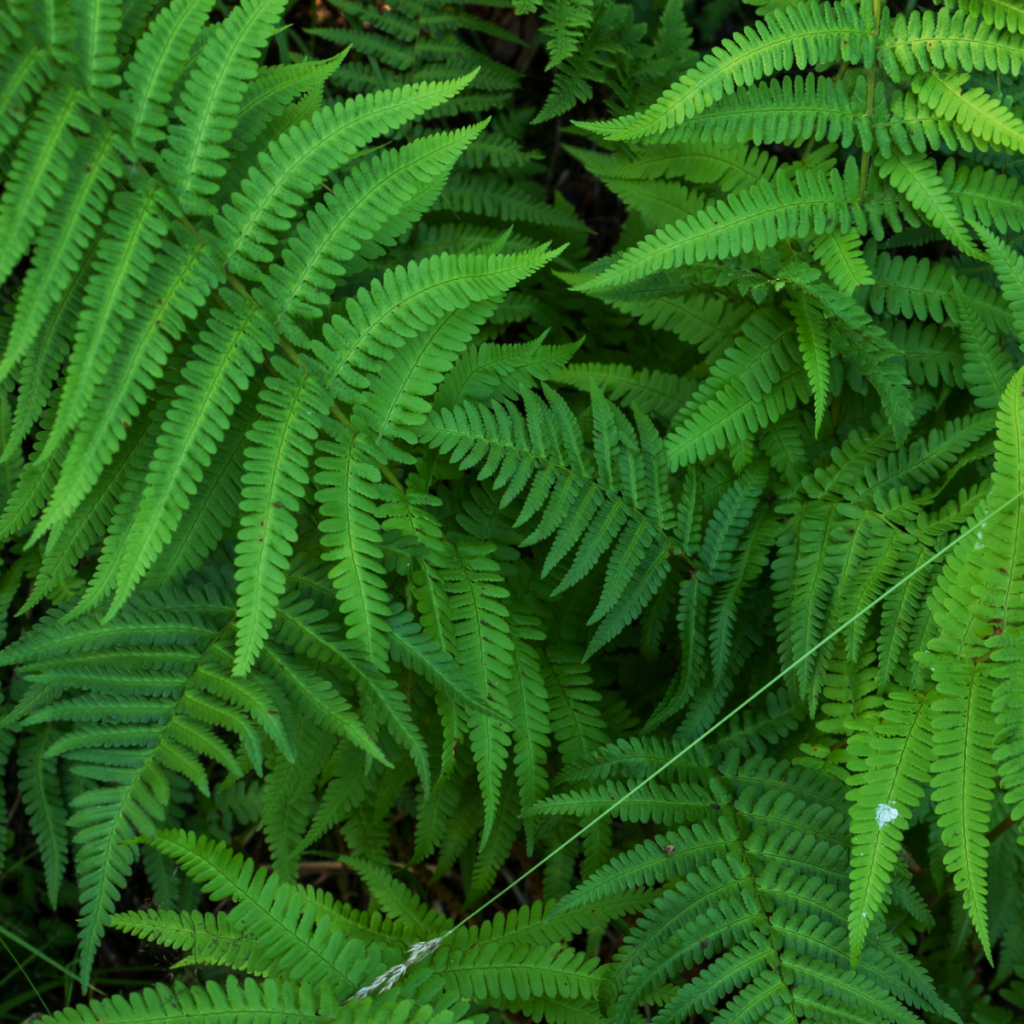
- Japanese Painted Ferns (Athyrium niponicum ‘Pictum’): This fern complements the color palette of Bleeding Hearts. Its silvery-grey fronds with hints of blue and purple add a cool contrast to the warm pinks and whites of the Bleeding Heart, enhancing the visual appeal and adding a splash of color even in the shaded parts of the garden.

- Solomon’s Seal (Polygonatum): With its arching stems and hanging, bell-shaped flowers, Solomon’s Seal mirrors the growing conditions and form of Bleeding Hearts. It extends the season of interest as it continues to thrive and flower after the Bleeding Hearts have retreated, maintaining the lushness of your garden.
Wrapping up A Symphony of Shadows
Bleeding Hearts are not just plants; they are the heartbeats of a shaded garden’s soul, bringing life and focus to serene spaces. By integrating these florals with thoughtful companions, your garden will maintain a lush, captivating allure all season long. Ready to transform your garden into a landscape of enchanted tranquility with the graceful arcs of Bleeding Heart?
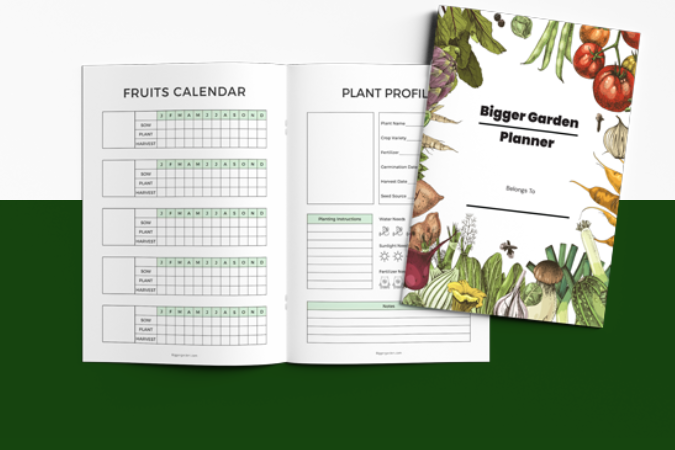


Before you go!
11 Low Maintenance Flowering Bushes for the Front of Your House
Brighten Your Garden and Mood with Zinnias: A Colorful Guide to Growing These Cheerful Blooms
From Boring to Breathtaking: Discover the Top Flowers to Pair with Carnations!
10 Bright Yellow Perennial Flowers to Add to Your Garden